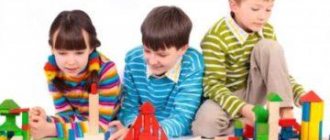How deviant behavior manifests itself
Schoolboy
- fights too often;
- hooligans;
- cruel to peers or animals;
- spoils other people's things;
- sets something on fire;
- steals;
- often lies;
- skips school, violates school rules;
- leaves home, wanders;
- behaves defiantly, deliberately provokes other people into conflicts.
Deviation can be of two types. The first includes such violations that imply criminal liability, in other words, criminal. In this article we will not dwell in detail on this particular form; the subject of the article will be manifestations related to the second type - violations as a result of distortion of social attitudes that do not imply criminal liability, as well as deviations due to learning difficulties and an unfavorable family environment. Most often, the prerequisites for the appearance of such deviations are formed in childhood and become fixed in adolescence.
Reasons for deviant behavior
A deviation can be formed as a result of initially given organic reasons or as a result of violations in the process of development and education. Initially predetermined causes include genetic developmental defects, birth injuries, disturbances in the formation and development of various systems and functions of the body (intellectual development, features of mental operations, etc.). These reasons create conditions for the occurrence of disorders (for example, in hyperactive children, mentally retarded, autistic). But, more often than not, they only determine the risk group for the development of social deviant behavior in children and adolescents. A student may not have any problems with discipline, but at the same time have such developmental disorders. Moreover, under subjectively difficult stressful conditions, such a schoolchild or teenager may begin to behave in a way that falls under the definition of a deviant child. Risk conditions can be associated with various areas of life.
In the family it is:
- antisocial character of the family as a whole or of its individual members: marginal lifestyle of parents, alcoholism, drug addiction, etc.;
- single-parent family or severe disruption of the relationship between parents;
- violations in the style of family upbringing (such as hyper or hypoprotection, family idol, etc.);
- physical or psychological violence in the family (both in relation to children and in relation to other family members, which children witness).
At school it is:
- priority in ensuring the personal authority of the teacher at any cost (including through humiliation and insults of the child);
- the complexity of tasks exceeds the student’s real capabilities (interest in learning and knowledge is lost, the teenager is looking for other ways to assert himself and compensate for his own failure);
- it is difficult for a student to find his place in a team, or the team chooses him as a means of solving their own socio-psychological difficulties, and this can be expressed in boycotts, ridicule, and bullying.
If any of the listed reasons are present, then the process of forming and consolidating the psychology of deviant behavior looks like this: 1. The student does not know how to behave in new, unusual conditions. The methods known to him do not help, and he has not yet learned new ones or does not know how to behave differently. 2. The student tries to build relationships with others, but his attempts are not successful. As a result, he becomes exhausted, becomes convinced of his failure and is not confident in his abilities. At the same time, his anger towards what is happening appears and grows, and this already pushes the little personality to violate the rules accepted in society. 3. The situation becomes psychologically unbearable for an immature person, and she does not know how to resolve it in an acceptable way. 4. Further deviation from the norm can be formed in one of two ways. Or the student commits unacceptable actions and at the same time understands the incorrectness of his reaction. In this case, he experiences a feeling of guilt, his self-esteem becomes low and the teenager finds himself in a situation of increasing psychological stress. As a result, various psychological disorders (neuroses, psychoses) may arise that require qualified help. Or the teenager commits negative actions and at the same time justifies them. He does not have an internal conflict in connection with the way he behaves; he acts with the aim of obtaining benefits or increasing self-esteem, position among peers, and self-affirmation.
Prevention of deviant behavior
To prevent the development of deviations in children and adolescents, parents need to pay attention to both the family attitudes and upbringing models adopted in their family, and the psychological atmosphere surrounding their child at school or kindergarten. It is important to create an atmosphere of acceptance, understanding and security in the family. At the same time, it is necessary to ensure clarity of boundaries and rules in the family: what is prohibited in our family, and what is permissible in our family is allowed. It is important that parents have a clear understanding of the principles on which they are raising their children, what goals they are trying to achieve, and whether their methods of achieving educational goals are effective and whether they do not cause more harm to children. It is equally important that family rules are communicated and explained to children, because only understanding will ensure that children ultimately adopt these rules as their own. Otherwise, incomprehensible rules and double standards imposed by force cause a desire to break them in every case when punishment can be avoided. It is also necessary to take into account and clarify the motives of the little person’s behavior in order to avoid unfair punishment in cases where he was driven by an understandable desire to protect himself, perhaps in a not entirely constructive way. In this case, the main goal of the parents is to understand what happened and help him choose socially acceptable ways to regulate relationships. It is also very important to provide a girl or boy with a person-centered approach in educational institutions, at least by choosing a school with appropriate values and principles of education. Flexibility in relation to educational opportunities will help to avoid situations of chronic failure and will allow the student to adequately assess his contribution and responsibility in educational activities. Parents can provide great assistance to children in the development of emotional and social intelligence by explaining the emotional states of them and other people in interaction situations: what a person feels, why he reacts in this way, how the situation could be resolved in a better way, etc. Children and adolescents need to name their states and expand their experience in building relationships with other people. A teenager with developed social and emotional intelligence is less susceptible to irritability and impulsive behavior, is emotionally more stable and his adaptive capabilities are higher - which means that in a new and difficult situation for him, he is less at risk of reacting in a disturbed way.
Prevention of deviant behavior of minors
Although e-cigarettes have been around for more than a decade, vaping rates have increased dramatically in recent years, especially among teenagers. Electronic cigarettes are currently a very popular nicotine supplier among teenagers, and their popularity is growing rapidly. Teachers, doctors and most parents are alarmed by this trend, since vaping is harmful to the health of children, despite its rather harmless appearance and advertising.What is vaping?
Vaping or vaping, as it is called in Russia, is the inhalation and exhalation of vapors produced by heated liquid with nicotine from an electronic cigarette or vape, evaporator. These devices were invented as a means to gradually quit smoking, but quickly became a popular and addictive gadget. The stylish designs of some trendy vapes are similar to Apple products, which is doubly attractive to innovation-loving teenagers. Ease of use is the second plus.
Although vaping companies categorically deny that teenagers are among their target audience of consumers of advertising and products, critics have noted the presence of youth in advertising videos and images, the color scheme usually used to attract teenagers, animation, and actors under the age of 21 . The presentation of the main idea also works: vaping “makes you happier and increases the social status of the smoker.”
While some of the health risks associated with vaping appear to be less severe than traditional combustible cigarettes (there's no tar, for example), dangers still exist.
Vaping and Teen Health
Electronic cigarettes contain fairly high levels of nicotine. According to the descriptions, the nicotine content in one cartridge for “egoshka”, the JUUL brand, is equivalent to one pack of cigarettes. Because of these high levels of nicotine, vaping is quickly addictive. And teenagers are more susceptible to the effects of nicotine than adults because their brains are still growing and developing. For this reason, addiction to alcohol, drugs or nicotine occurs much faster in adolescence than in adults. This addiction affects not only physical health, but also mental abilities, such as the ability to concentrate. At first, nicotine helps you focus on a task, but then your ability to concentrate decreases. Statisticians are already noting a link between passing GCSEs and vaping habits, and it's not in favor of addicted teens. E-cigarettes and similar devices contain carcinogenic compounds, and a recent study found that levels of carcinogens in the urine of teenagers who vape increased significantly. A recent study also found that vaping does cause lung tissue irritation, similar to that seen in smokers and people with lung disease, and causes damage to vital immune system cells.
Vaping also increases your heart rate and blood pressure, so it can worsen circulatory problems, just like regular smoking.
The smoke from e-cigarettes has a low odor when smoked, they are easy to hide and can even be discreetly used in public places, including schools and colleges. It becomes very difficult to control teenagers.
Why parents should worry
One of the problems with vaping is that teenagers hear that it is not as dangerous to health as smoking cigarettes and think that it is not harmful. The popular belief is that with this type of smoking, people inhale mainly flavors in water vapor.
A recent study of high school graduates found that children. Those who chose vaping as their first introduction to smoking are four times more likely to later switch to smoking regular cigarettes than those who did not start smoking in any way. Vaping gradually introduces children to the idea of the safety of smoking in general.
Vape packaging doesn't say much about the dangers. They look tempting and contain “only” 5% nicotine, so teenagers believe that the remaining 95% is water or vapor.
Another danger is the popularization of smoking. Despite efforts to ban images of smoking characters in cartoons (remember the story with the wolf from “Well, Just Wait!”), films, and advertising, smoking is still perceived by teenagers as a “cool” activity that signifies belonging to the adult world. Manufacturers and advertising companies seek to circumvent laws to maintain this confidence in the name of increasing profits. With vaping, the situation is even worse than with regular cigarettes: it is an even cooler alternative, both because of the appearance and because of the increased curiosity about new flavors of “vapor”, for example, mango, cucumber, cream and other options , masking nicotine.
Although the sale of nicotine and devices to teenagers is officially prohibited, parents note that children can solve the issue of purchasing vapes in the same way as with regular cigarettes, asking older friends or buying everything online.
How to talk to kids about vaping
Experts advise starting with self-education so that parents know the subject of the conversation, and using the curiosity of the teenagers themselves. The most important thing is to have a dialogue, since categorical statements like “This is bad for you” simply end the conversation without allowing it to begin. It's worth starting with general questions, such as how many kids in the class know what vaping is. Next, you can clarify which flavors are popular and move on to the experience of the teenager himself, clarifying what he knows about vaping. Even if the child is not yet at risk, it is worth starting to discuss the issue in advance, since prevention is much easier than treating addiction.
If parents understand that the child already has an addiction, it is worth consulting with a doctor who works with such health issues. Although both teenagers and adults tend to believe that vaping is different from regular smoking, it is also a form of nicotine addiction, which can be more serious than classic cigarette smoking.
Correction of deviant behavior
Due to the fact that the causes of behavior disorders in children and adolescents lie in different areas of their lives, both family and social development of the child, an integrated approach is required to correct them. It is important to evaluate the boy or girl for biological reasons for deviant behavior and, if present, provide adequate treatment. It is also necessary to review the methods of upbringing in the family, established models of interaction between adults and younger family members. Here, consultations with a family and child psychologist will provide invaluable assistance, since it is within his competence to see and help correct those aspects that, due to their familiarity and routine, may be invisible to parents. Children and teenagers often find themselves in difficult situations simply because they lack social skills and abilities. They do not know how to respond to provocation, how to communicate their dissatisfaction and disagreement in an acceptable way, and become upset and angry when other people's reactions go against their expectations. To develop such skills, on the advice of a psychologist, role-playing games are used, creating difficult social situations and allowing a young person or deviant teenager to find new ways of interaction in the “laboratory conditions” of the game, in a supportive atmosphere. The student receives feedback on his ways of interacting with adults and peers and learns to understand how his actions and actions can be reflected in the reactions and behavior of other people. In group or individual sessions with a psychologist, children learn how they can satisfy their needs for self-expression without causing harm to other people and themselves, and also gain skills in socially acceptable behavior. With the help and support of a specialist, the “difficult teenager” consolidates new abilities and finds the strength and opportunity to transfer the acquired skills from a learning and gaming situation to a real life environment. Deviant behavior of children and adolescents causes a lot of strong feelings among parents and teachers, a lot of anger, fear, and indignation. However, a person with disrupted behavior often suffers from the inability to solve difficult life situations for him in a socially positive way. Often deviant behavior is a cry for help, a signal that the student is experiencing serious trouble and needs support. Try to hear this call and seek help in a timely manner for your children and yourself!
If you or your children need psychological help, call tel. and make an appointment with a psychologist in St. Petersburg!
Psychological prevention of deviant behavior in children and adolescents
The changes taking place in our society today have highlighted with particular urgency the problem of helping children and adolescents with deviant behavior and the development of an effective system of prevention and rehabilitation measures for this group of youth.
The search for the effectiveness of social prevention measures involves determining the essence of the concept of “deviant behavior”, its types, factors influencing the accumulation of deviant potential of students, the causes of deviant behavior in children and adolescents, as well as the role of educational institutions in solving problems of preventing deviations in behavior.
Deviant behavior is usually called social behavior that does not correspond to the established norms in a given society.
I.S. Kohn clarifies the definition of deviant behavior, considering it as a system of actions that deviate from the generally accepted or implied norm, be it the norms of mental health, law, culture and morality.
The current system of measures to prevent deviant behavior is ineffective. Causes:
· priority of educational tasks over educational tasks in working with children and adolescents in an educational institution;
· low availability of specific technologies of preventive work for educational practitioners;
· providing assistance to “difficult children” mainly by enthusiastic teachers;
· lack of system and inconsistency in the implementation of prevention and rehabilitation measures.
In order for preventive measures to be more effective, the following conditions must be created:
· identifying the adequacy of the applied preventive measures based on socio-pedagogical monitoring data;
· scientific and methodological equipment for the process of interaction between school, family and other social institutions in organizing work with children with deviant behavior (organization of interdepartmental interaction);
· training to improve the level of competence of specialists.
Deviant behavior is divided into two categories:
1. Behavior deviating from the norms of psychological health, implying the presence of obvious or hidden psychopathology.
2. Antisocial behavior that violates some social, cultural and especially legal norms.
Deviations in the behavior of children and adolescents may be due to the following reasons:
· socio-pedagogical neglect
when children or adolescents behave incorrectly due to their bad manners, existing negative stereotypes of behavior, and their lack of the necessary positive knowledge, skills and abilities;
· deep psychological discomfort
, caused by dysfunctional family relationships, a negative psychological microclimate in the family, systematic academic failures, poor relationships with peers in the class, incorrect (unfair, rude) attitude towards him from parents, teachers, classmates;
· deviations in the state of psychological, physical health and development
caused by age-related crises, character accentuations and other reasons of a physiological and neuropsychiatric nature;
· lack of conditions for self-expression
, lack of employment in useful activities, lack of positive and meaningful social and personal life goals and plans, as well as lack of constructive leisure;
· neglect
, the negative influence of the environment and the socio-psychological disadaptation developing on this basis, the confusion of social and personal values from positive to negative.
Ways to prevent deviant behavior in adolescents:
The system for preventing deviant behavior of minors in modern conditions must take into account existing positive experience and, at the same time, new requirements of society.
It should be characterized by:
a) a combination of state and social principles, forces and resources in this activity;
b) a combination of four tasks: impact on the individual, the environment, the activities of subjects of education and prevention, public opinion;
c) specialization of the information fund, methodology, organizational forms and management, personnel and resources;
d) distribution of functions between individual participants in preventive activities;
e) determining the scope of application of educational measures, ensuring normal living conditions, social assistance and prevention itself, including its legal forms;
f) transition, if necessary, from predominantly general educational to legal measures of influence, ensuring the sufficiency and timeliness of this influence.
The prevention system should be based on legality, justice, democracy, interaction at the level of the country, federal subject, local government and between these levels, and a specialized legislative framework.
Education and prevention are interacting, but not identical spheres; therefore, in particular, educational institutions cannot be expected to solve problems that require specialized means using general educational means.
Prevention of deviant behavior of minors, as a continuously operating system, has the following main stages:
a) improve the environment and provide assistance to minors who find themselves in unfavorable living and educational conditions, even before the negative effects of these conditions significantly affect the behavior of such persons (early prevention stage);
b) prevent the transition to a criminal path and ensure the correction of persons with a significant degree of maladjustment who commit offenses of a non-criminal nature (direct prevention stage);
c) prevent transition to a criminal path and create conditions for the correction of persons who systematically commit offenses, the nature and intensity of which indicate the likelihood of committing a crime in the near future (stage of prevention of pre-criminal behavior).
Prevention methods are:
1. Ensure effective family participation. This is due to the development of assistance to families raising teenagers in conditions below the subsistence level, in the absence of one of the parents, illness or prolonged absence of parents due to the nature of work; protecting families with teenagers from the material and moral consequences of parental unemployment or forced job changes; formation in conditions when many families are confused, have lost clear ideas about the place and tasks of the family in raising adolescents, knowledge of rights and responsibilities in this area, ways to implement them, opportunities to receive help from government bodies, local governments and the public in cases when necessary protect the rights of teenagers or stop negative influences on them.
2. Effective assistance in creating life prospects for adolescents with physical and mental abnormalities is essential. Since their likelihood of deviant behavior is 4-5 times higher than the average for minors, due to lack of adaptation in a normal environment, the expansion of the network of institutions, their social, medical and psychological adaptation, as well as counseling assistance to families with such teenagers, includes among the priority tasks.
3. Improving the activities of educational institutions. This is due to proposals to restore the role of the school in the lives of adolescents on the basis of pedagogy, dialogue and cooperation, joint activities with the family, quality improvement of qualifications, cultural and moral level of teachers and the creation for them of material conditions and a psychological atmosphere that would encourage their retention in school and implementation of the educational potential of the educational institution.
4. The activities of bodies promoting the employment of teenagers who do not continue their studies and their labor adaptation. In modern conditions, it is especially important to ensure the preservation of advantages in hiring teenagers, a special procedure for their dismissal (exclusion from educational institutions); maintaining special officials for working with teenagers at the enterprise, as well as material and moral incentives.
5. Activities of institutions organizing leisure time for minors, highlighting special tasks in relation to adolescents from disadvantaged families and other risk groups. Currently, the most relevant measures are those that should resume the activities of the network of club (cultural, educational, sports) institutions for minors. At the same time through charity, voluntary foundations, public organizations. Taking into account the fact that the places where groups of minors are formed at their place of residence are areas with a particularly low level of culture and leisure opportunities for young people, the activities listed above are even more relevant as a social basis for prevention.
6. Development of social protection and assistance services for families and minors. The Law “On the Fundamentals of Social Services for the Population in the Russian Federation” identifies as one of the priority areas of activity of the social service the assistance, support, protection of minors in difficult life situations associated with orphanhood, neglect, poverty, conflicts and abuse in the family, lack of a permanent place residence. In this regard, the list of social service institutions includes territorial centers for social assistance to families and children, social rehabilitation centers for minors, centers for assistance to children without parental care, social shelters, orphanages for children with physical disabilities.
7. Participation of voluntary foundations, public organizations, public associations and movements. Foreign experience shows that social protection of families and minors, support and assistance to children at risk can be largely carried out (including training and payment of social workers) on the basis of these organizations and associations. Early prevention measures include: parent education; placing children in an after-school group; financial assistance from social services; conversation about the rights and responsibilities of parents; consideration by competent authorities of materials on improper performance of parental responsibilities; referral for treatment, etc. Identification of families in need of help and families in respect of whom it is necessary to take measures in order to ensure a normal situation is carried out by the authorities of social protection and assistance to families and minors in cooperation with educational institutions and public associations.
Thus, early prevention is carried out with the help of some prohibitive and restrictive measures (for example, labeling on media publications, banning the sale of alcoholic beverages to children and adolescents), as well as with the help of legal and pedagogical propaganda.
A negative trend in the life of society is the crisis of the family institution, the leveling of the concept of moral values and moral norms, which results in a steady increase in the number of social orphans, an increase in child neglect, and crime. The concept of deviant behavior has become widely used in pedagogy.
Deviant behavior in pedagogical practice is usually correlated with the concept of a difficult teenager.
Currently, difficult teenagers or teenagers with deviant behavior receive quite a lot of attention from specialists. The psychological portrait of a difficult teenager, presented in modern literature, looks something like this: “A teenager with deviant behavior is aggressive, vain, stubborn, emotionally unbalanced, apathetic, and does not accept social norms. Behavior is impulsive, the value system is replaced by group norms, and is focused on leisure.”
I would like to include different categories of teenagers. These include pedagogically neglected children and socially maladapted and difficult-to-educate children, who often include accentuated teenagers, conflict-prone teenagers, teenagers with a high level of negativism, demonstrating non-conformist tendencies in behavior. Also, teenagers with an antisocial orientation are also classified as deviants. All these categories of adolescents are usually combined into one group - adolescents with “deviant behavior.” The various components of the characteristics we have given are, to one degree or another, actually characteristic of different categories of difficult adolescents. At the same time, combining them into one group predetermines the expectation of deviant behavior and the manifestation of characteristics that correspond to negative expectations. This scheme is correlated with the theory of stigmatization, which explains the emergence and consolidation of deviant behavior as a consequence of the fact that a social group sticks appropriate labels on an individual by correlating the actions of a particular person with certain expectations (primary deviance), a reputation is created that forces the individual to adhere to a deviant role (secondary deviance) .
Thus, by classifying a teenager as a group of “difficult children,” we give him the opportunity to worsen his deviance.
Sharypova O.A. teacher-psychologist at the medical office. prevention BU Khanty-Mansi Autonomous Okrug-Yugra "Khanty-Mansiysk Clinical Psychoneurological Hospital"










